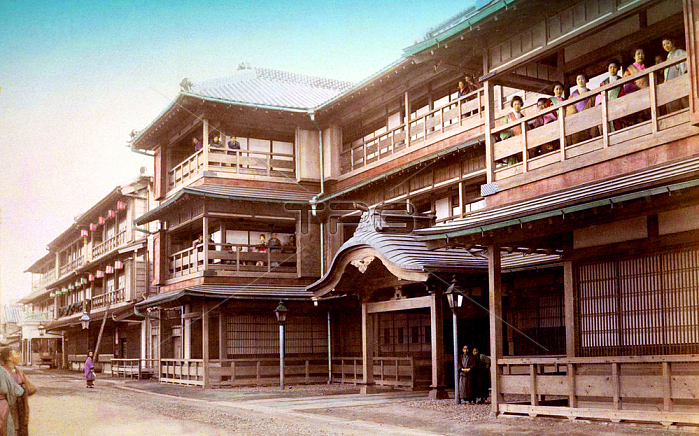
Yoshiwara (??) was a famous Akasen district (red-light district) in Edo; present-day Tokyo; Japan.
In the early 17th century; there was widespread male and female prostitution throughout the cities of Kyoto; Edo; and Osaka. To counter this; an order of Tokugawa Hidetada of the Tokugawa shogunate restricted prostitution to designated city districts. These districts were Shimabara for Kyoto (1640); Shinmachi for Osaka (1624-1644) and Yoshiwara for Edo (1617). The main reason for establishing these nightless cities was the Tokugawa shogunate's trying to prevent the nouveau riche chonin (townsmen) from political intrigue.
People involved in mizu shobai (????) 'water trade' would include hokan (comedians); kabuki (popular theatre of the time); dancers; dandies; rakes; tea-shop girls; Kano (painters of the official school of painting); courtesans who resided in seiro (green houses) and geisha in their okiya houses.
The courtesans would consist of yujo (women of pleasure/prostitutes); kamuro (young female students); shinzo (senior female students); hashi-joro (lower-ranking courtesans); koshi-joro (high-ranking courtesans just below tayu); tayu (high-ranking courtesans); oiran ('castle-topplers'; named that way for how quickly they could part a daimyo (lord) from his money); yarite (older chaperones for an oiran); and the yobidashi who replaced the tayu when they were priced out of the market.
In addition to courtesans; there were also geisha/geiko; maiko (apprentice geishas); otoko geisha (male geishas); danna (patrons of a geisha); and okasan (geisha teahouse managers). The lines between geisha and courtesans were sharply drawn; however - a geisha was never to be sexually involved with a customer; though there were exceptions.
| px | px | dpi | = | cm | x | cm | = | MB |
Details
Creative#:
TOP20145999
Source:
達志影像
Authorization Type:
RM
Release Information:
須由TPG 完整授權
Model Release:
No
Property Release:
No
Right to Privacy:
No
Same folder images:

 Loading
Loading